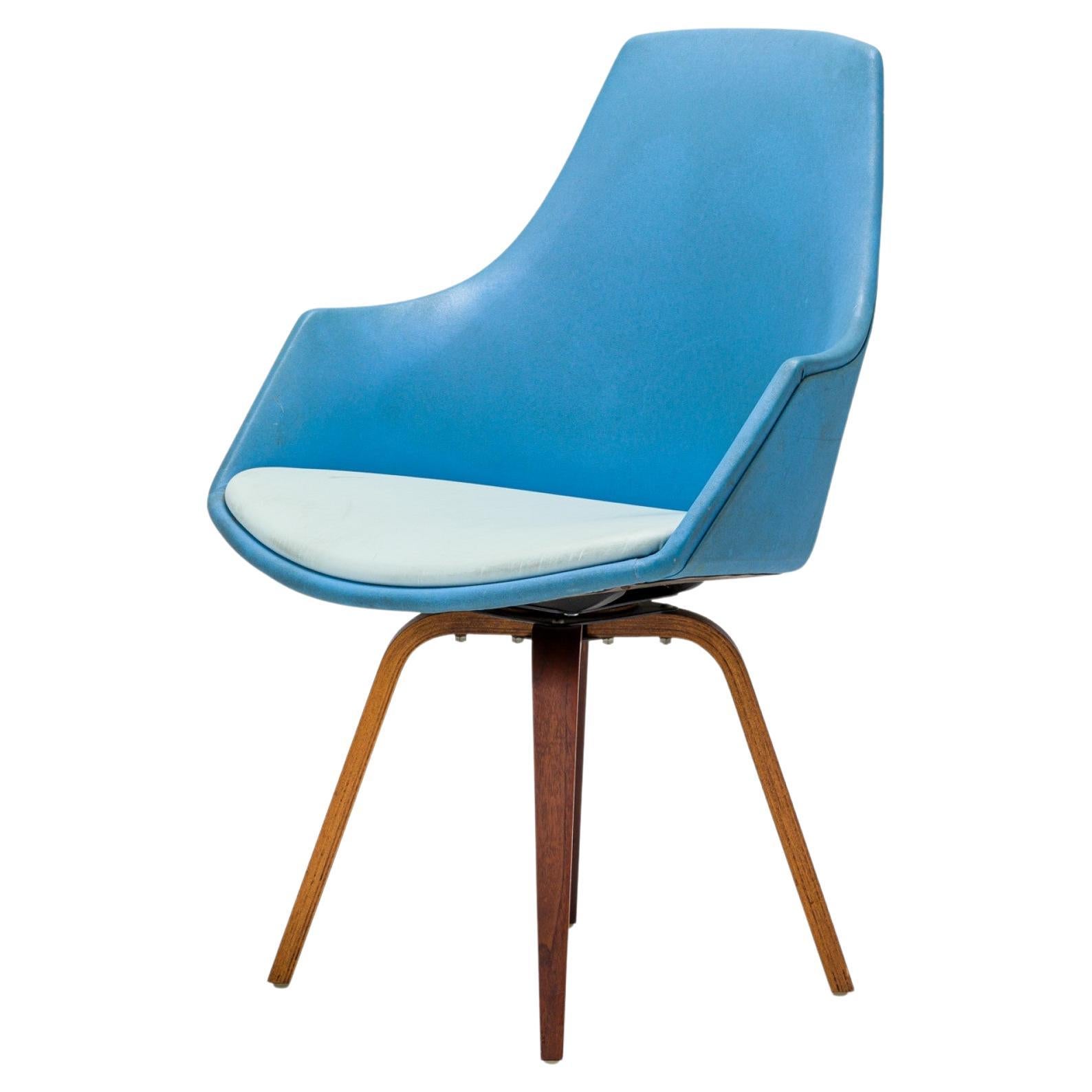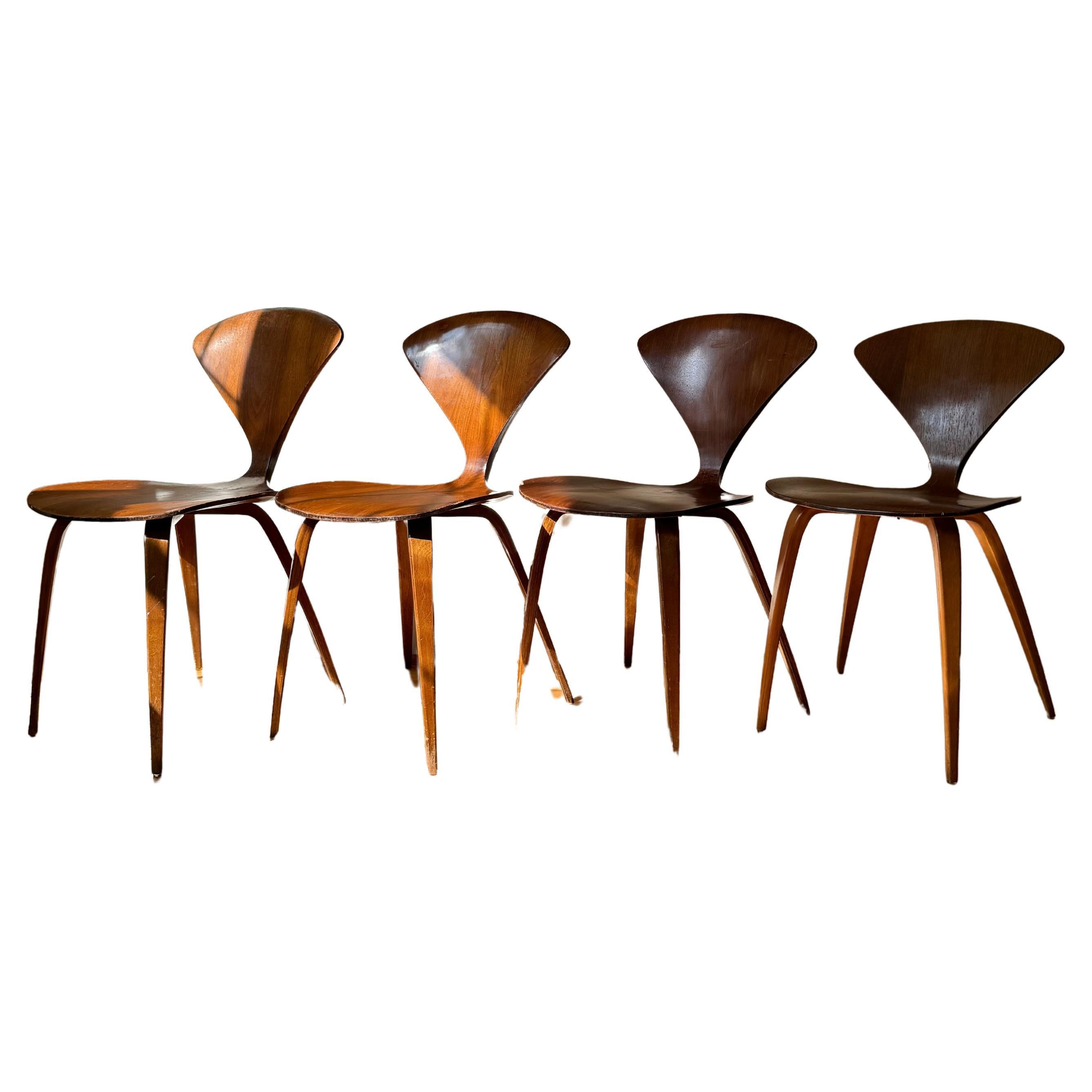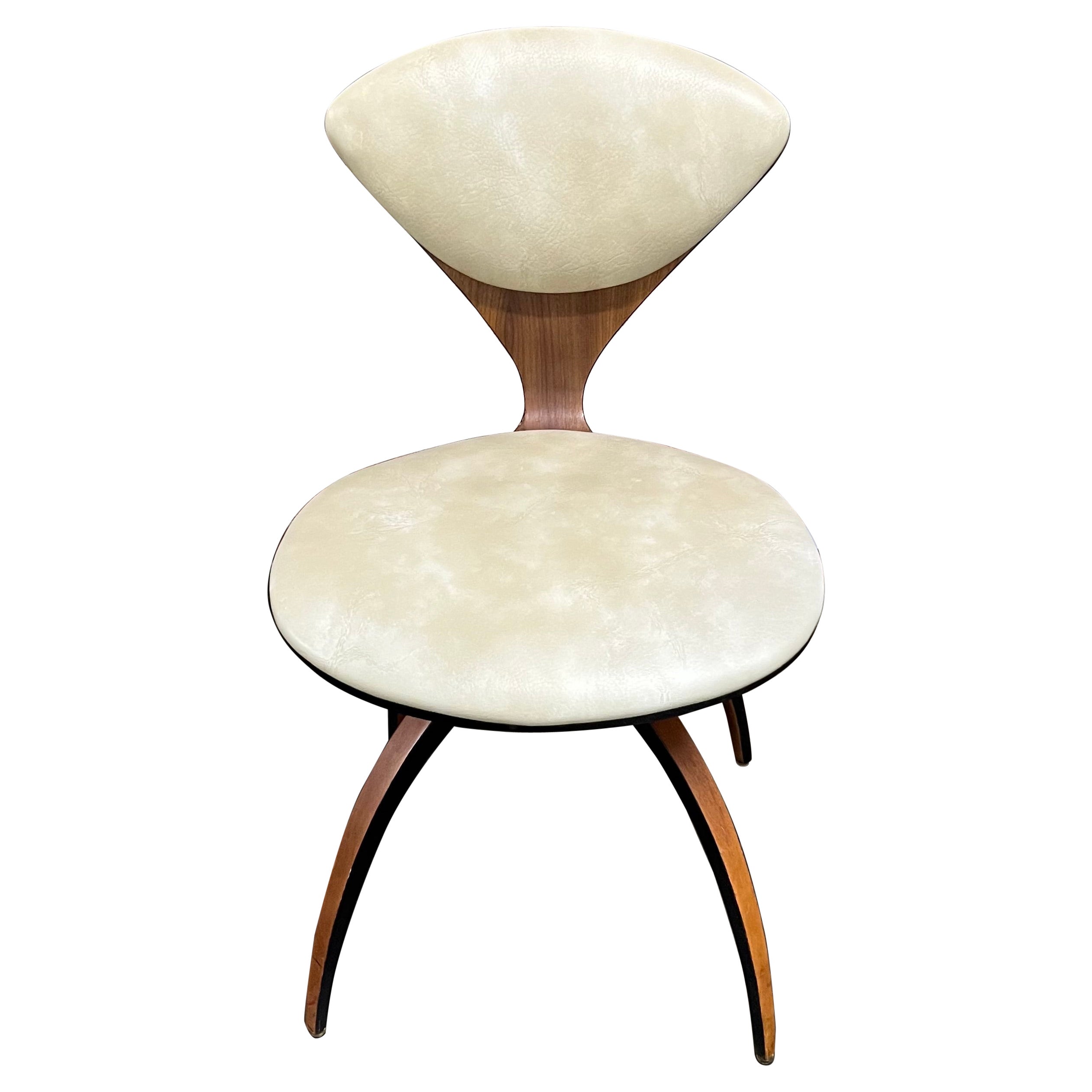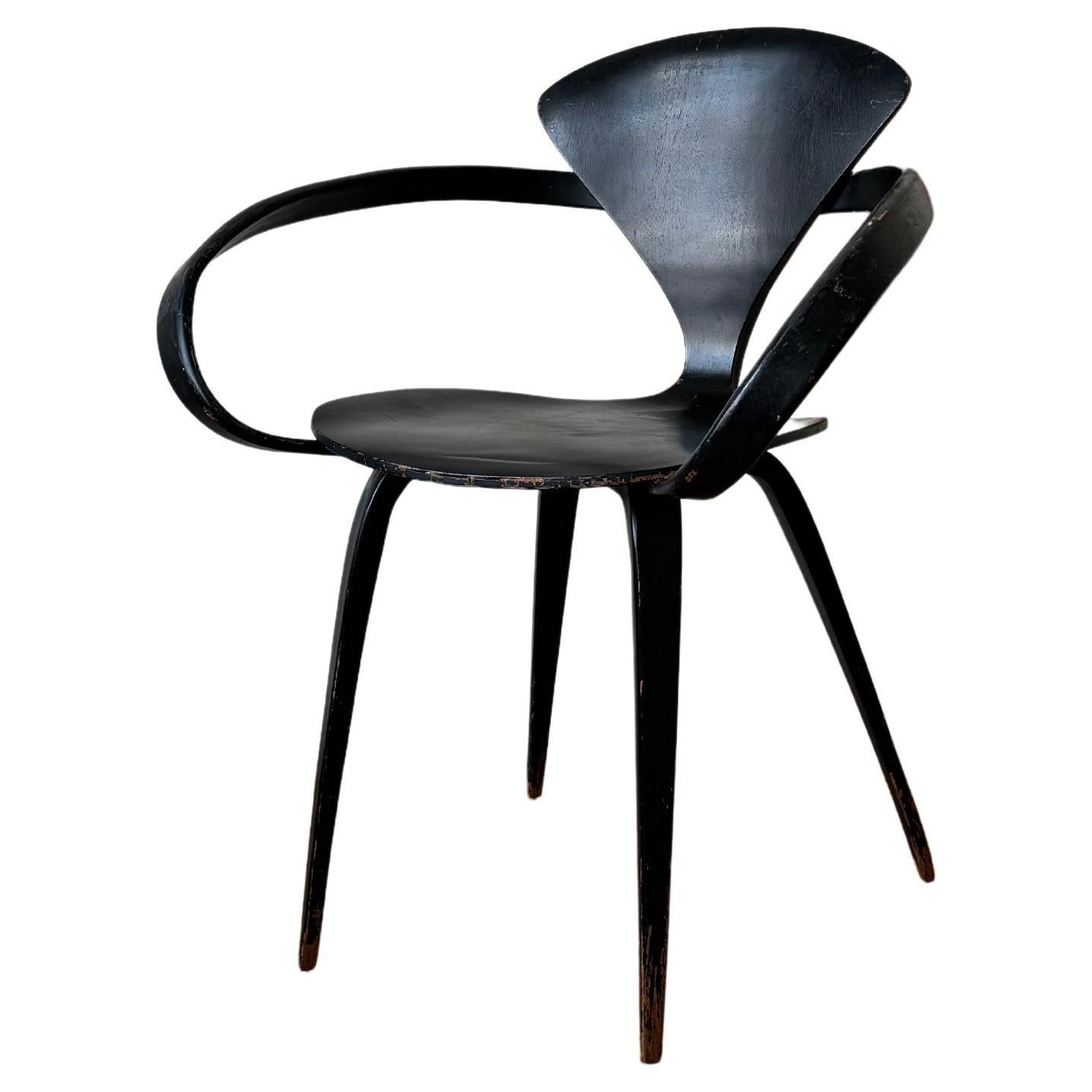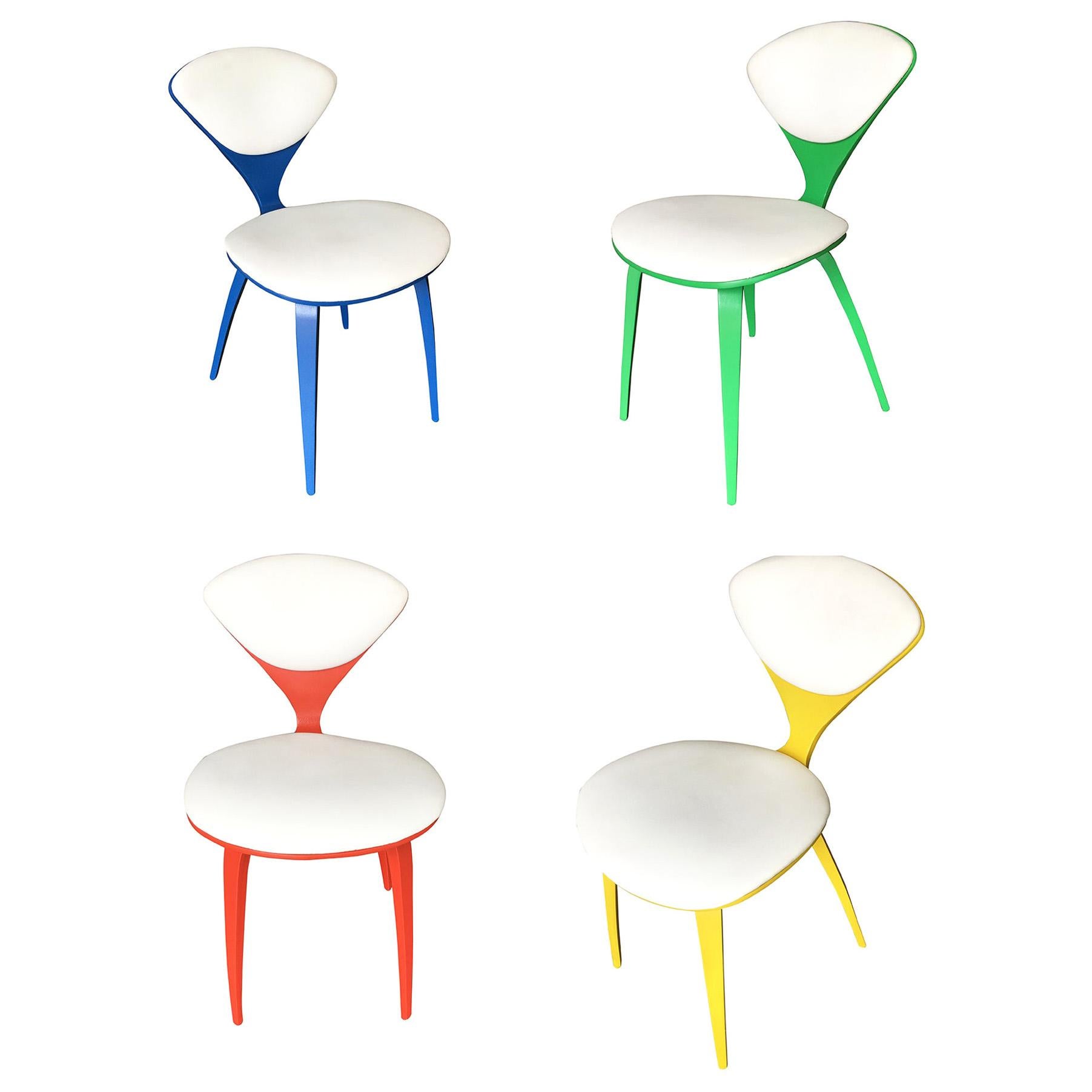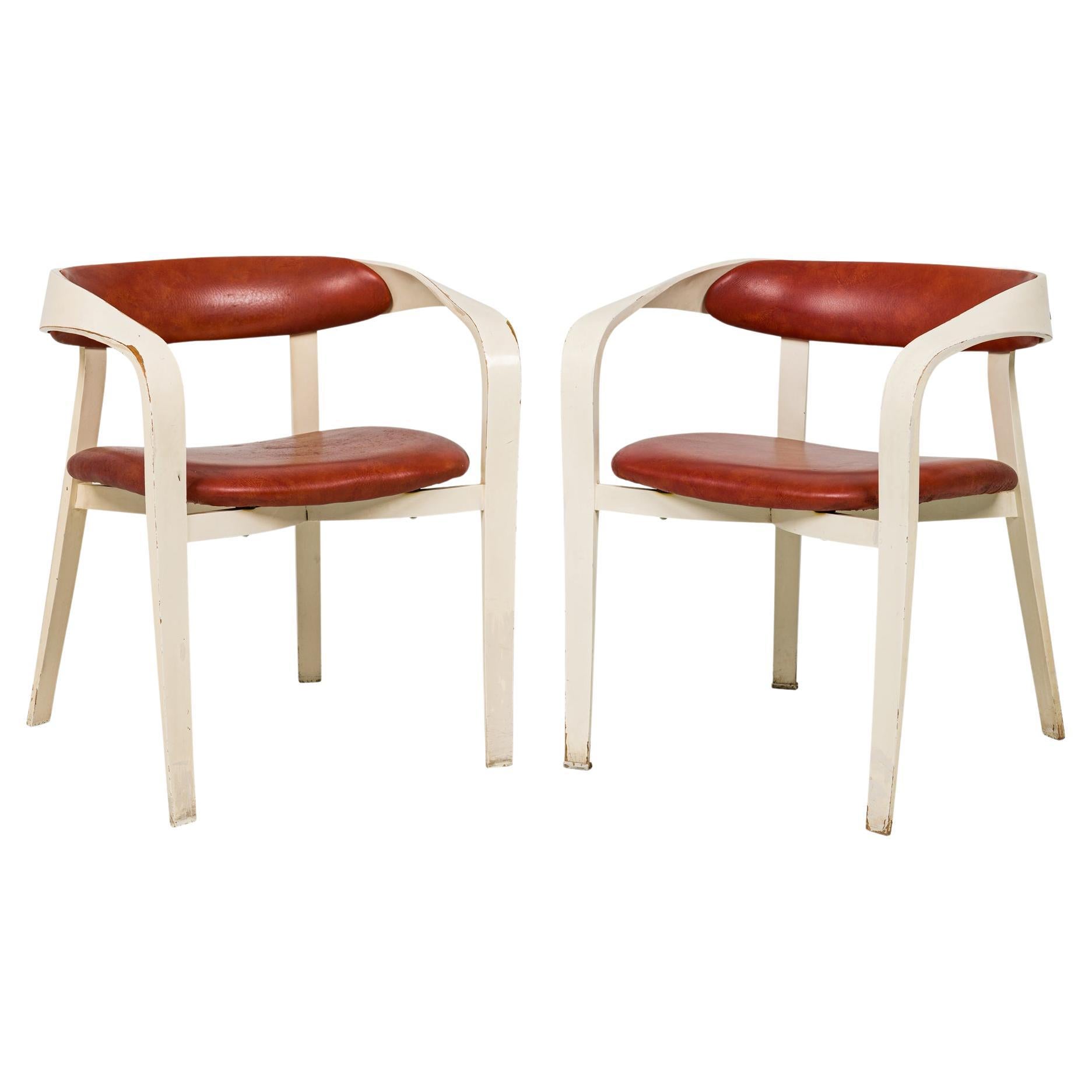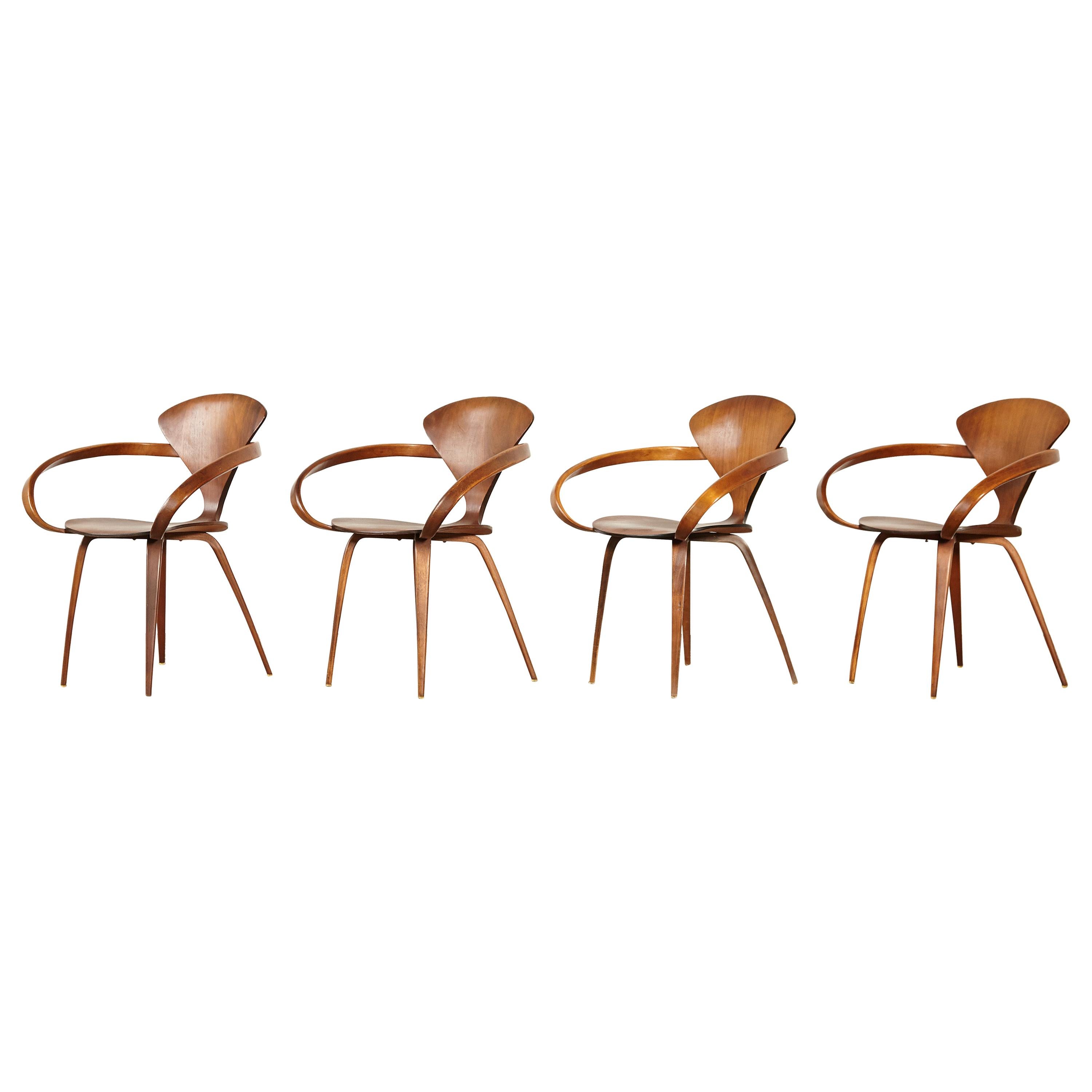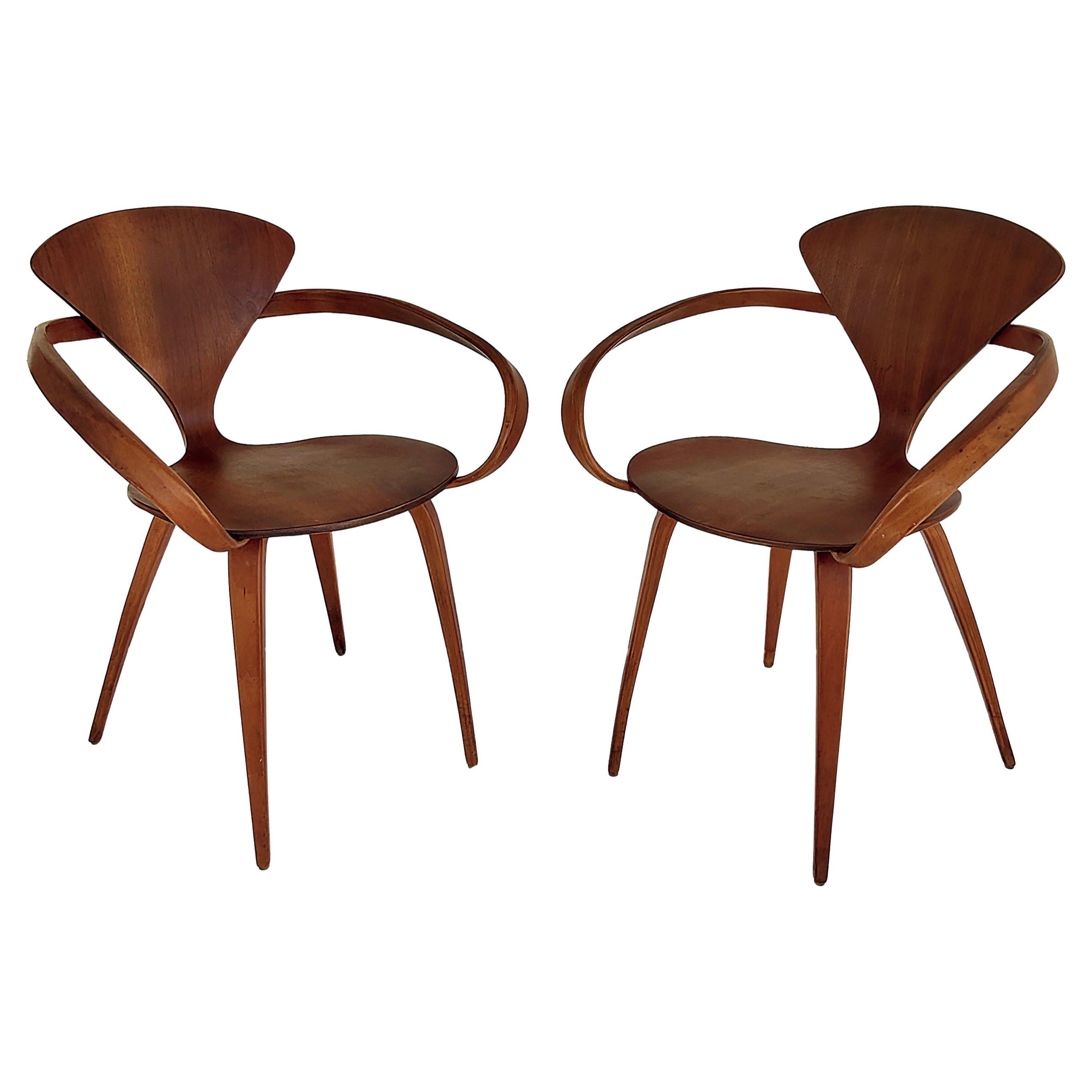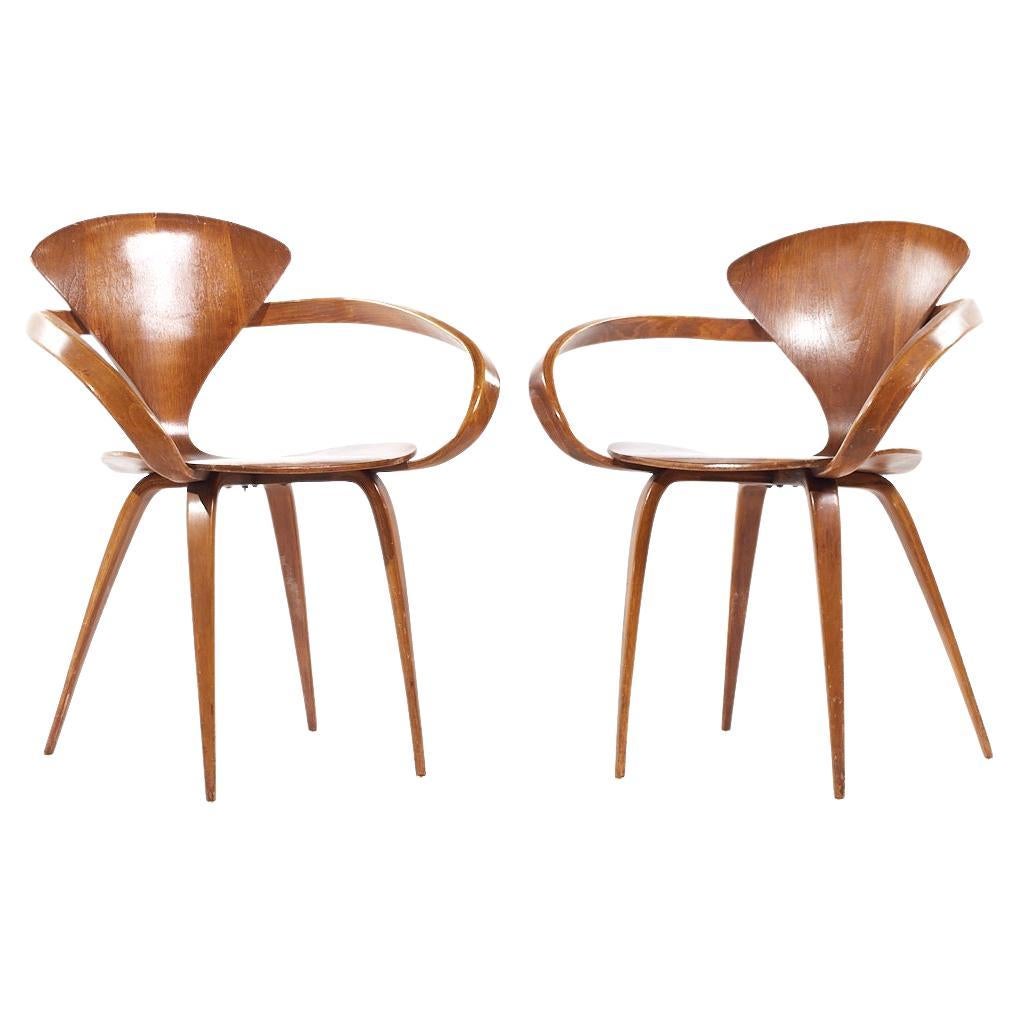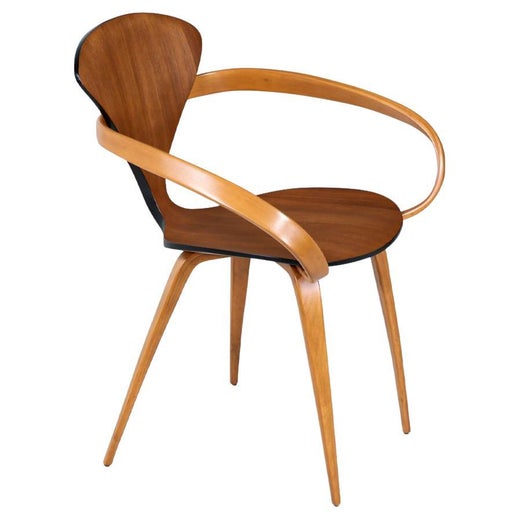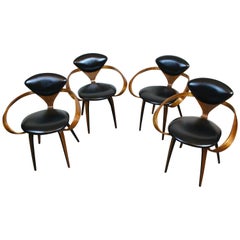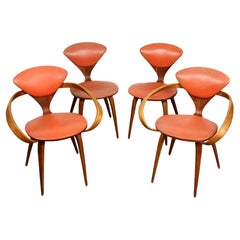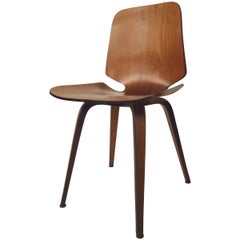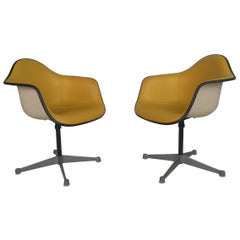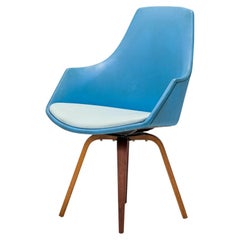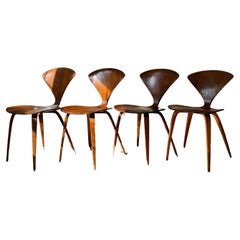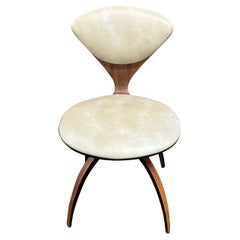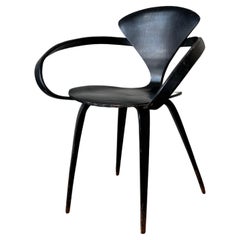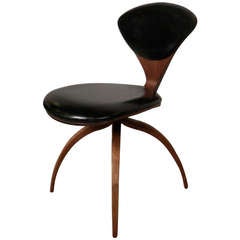
Norman Cherner Chair For Plycraft
View Similar Items
Norman Cherner Chair For Plycraft
About the Item
- Creator:Plycraft (Manufacturer),Norman Cherner (Designer)
- Dimensions:Height: 31 in (78.74 cm)Width: 18 in (45.72 cm)Depth: 20 in (50.8 cm)Seat Height: 18 in (45.72 cm)
- Style:Mid-Century Modern (Of the Period)
- Place of Origin:
- Period:
- Date of Manufacture:1950s
- Condition:Wear consistent with age and use. Newly refinished with some repair work.
- Seller Location:Brooklyn, NY
- Reference Number:Seller: 8714-PA170195NR1stDibs: LU9218941484
Norman Cherner
Norman Cherner was an influential designer who explored postwar technological innovations and how to incorporate them into furniture production and architecture. And while its history is complicated, his Cherner chair is one of the most successful examples of mid-century modern molded plywood seating.
Born in New York City, Cherner was an architect and a prolific designer who taught at Columbia University’s Teachers College. An enthusiast of the Bauhaus, he gave lectures in the late 1940s on the principles of the legendary German design school at the Museum of Modern Art.
Cherner was fascinated with the concept of cost-efficient design, and this extended into his pioneering ideas for prefabricated housing. His philosophy was that a modular home should be a complete design concept that included economical furniture and lighting. He published several DIY books, such as How to Build a House for $6,000. Cherner caught the interest of a housing cooperative in upstate New York and was contracted to design and oversee the construction of prefabricated housing in the town of Ramapo. The U.S. Department of Housing assembled a pre-built Cherner home for exhibition in Vienna.
But he is best known for his chair.
In the 1950s, one of George Nelson’s designers, John F. Pile, created the Pretzel chair. It had structural problems and proved too costly to make at Herman Miller, where Nelson was director of design. Production was subcontracted to Massachusetts company Plycraft, but the agreement didn’t last long owing to a dispute between the furniture manufacturers. Based on a recommendation from Nelson, Plycraft sought out Cherner to redesign the chair so that it would be durable and affordable to produce.
Cherner submitted his redesign only to be told that Plycraft had shelved the project. However, Plycraft secretly began producing what would become the Cherner chair under a different name — and Cherner later stumbled across his seat in New York. Cherner sued Plycraft and won. The chair became instantly popular after being featured in a Norman Rockwell illustration for a Saturday Evening Post cover in September of 1961.
Other noteworthy Cherner designs include his Konwiser furniture line, Multiflex storage units and tube lighting. The Museum of Modern Art praised his Konwiser collection as “some of the most progressive furniture designs available to the American public.”
In 1972, Plycraft discontinued production of his chair, and Cherner died in 1987. In 1999, his two sons founded the Cherner Chair Company and began making furniture based on their father's original designs for armchairs, chairs — including the Cherner chair — tables and credenzas.
Find vintage Norman Cherner furniture on 1stDibs today.
Plycraft
While the history of Plycraft is marred by scandal and lawsuits, the American furniture manufacturer produced charming lounge chairs and other seating during the mid-century modern era that are sought after by collectors today.
Paul Goldman founded Plycraft in Lawrence, Massachusetts, in 1953 — he had secured military contracts for the manufacturing of bentwood products during World War II and was able to move into the commercial market thereafter. While Plycraft counted fiberglass boats among its early offerings, its primary focus switched to furniture when what we now call mid-century modernism hit its stride and more designers began to explore the possibilities of bentwood furniture thanks to the revolutionary work of Alvar Aalto and Michael Thonet. Goldman was Plycraft’s principal designer, but George Mulhauser and Norman Cherner were also enlisted to create furniture for the brand.
In 1952, a designer named John F. Pile, who was working in the studio of Herman Miller design director George Nelson, conceived what he called the Pretzel chair in walnut and birch. Pile’s seat, which was inspired by European modernist design, proved too costly to manufacture and it had structural problems. So the illustrious Michigan furniture maker subcontracted Plycraft to produce the Pretzel chair — an agreement that was short-lived owing to a dispute between Plycraft and Herman Miller.
Goldman subsequently tapped Norman Cherner — an innovative architect, designer and professor at Columbia University who was recommended by Nelson — to create an iteration of the Pretzel chair that would be stronger and cost-efficient to manufacture.
Cherner submitted a comfortable, curvaceous update to the Pretzel chair in molded plywood but was told by Plycraft that the project was being scrapped and his drawings shelved. Months later, Cherner was shocked to stumble upon his redesigned chair in a furniture showroom in New York under the Plycraft name. Cherner sued Plycraft and won — the Cherner chair later appeared in a Norman Rockwell painting on the cover of The Saturday Evening Post.
In the late 1950s, designer George Mulhauser created the Mr. Chair for Plycraft, an adjustable, tilting, swivel armchair with a matching ottoman. Mulhauser was also a designer in George Nelson’s studio and is credited with having conceived the iconic Coconut lounge chair for Herman Miller. With its tufted leather seat and shell crafted from a single sheet of plywood, the Mr. Chair lounge — part of a line of seating for which Mulhauser was commissioned — bears a resemblance to the now-legendary Eames lounge chair, which was designed by Ray and Charles Eames for Herman Miller. Mulhauser’s chair was very successful for Plycraft. A model was even spotted on an episode of Star Trek.
More From This Seller
View AllMid-20th Century American Mid-Century Modern Dining Room Chairs
Upholstery, Faux Leather, Naugahyde, Walnut, Bentwood, Plywood
Mid-20th Century American Mid-Century Modern Dining Room Chairs
Plywood, Upholstery, Naugahyde, Wood, Bentwood
Vintage 1960s American Mid-Century Modern Chairs
Bentwood, Wood, Plywood
Vintage 1970s American Mid-Century Modern Swivel Chairs
Metal
20th Century Mid-Century Modern Chairs
Chrome
Mid-20th Century Mid-Century Modern Chairs
Chrome
You May Also Like
20th Century American Mid-Century Modern Swivel Chairs
Upholstery, Wood
Vintage 1950s American Mid-Century Modern Chairs
Bentwood
Mid-20th Century American Mid-Century Modern Chairs
Upholstery, Bentwood
Vintage 1950s American Mid-Century Modern Chairs
Bentwood
Vintage 1950s American Mid-Century Modern Chairs
Wood
20th Century American Mid-Century Modern Dining Room Chairs
Wood, Upholstery
